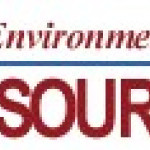- 行业: Government
- Number of terms: 3992
- Number of blossaries: 2
- Company Profile:
An evaluation of the need for and feasibility of reducing risk. It includes consideration of magnitude of risk, available control technologies, and economic feasibility.
Industry:Pollution control
An emission control method that involves recirculating exhaust gases from an engine back into the intake and combustion chambers. This lowers combustion temperatures and reduces NO<sub>x</sub>. (See also nitrogen oxides. )
Industry:Pollution control
A term used in the context of air quality management to describe a hydrocarbon's ability to react (participate in photochemical reactions) to form ozone in the atmosphere. Different hydrocarbons react at different rates. The more reactive a hydrocarbon, the greater potential it has to form ozone.
Industry:Pollution control
An air pollution control device that uses a high energy liquid spray to remove aerosol and gaseous pollutants from an air stream. The gases are removed either by absorption or chemical reaction.
Industry:Pollution control
An air pollution abatement device that removes undesirable organic gases through incineration.
Industry:Pollution control
An air pollution control device such as carbon absorber or incinerator that reduces the pollution in exhaust gas. The control device usually does not affect the process being controlled and thus is "add-on" technology, as opposed to a scheme to control pollution through altering the basic process itself. See also pollution prevention.
Industry:Pollution control
An air pollutant for which acceptable levels of exposure can be determined and for which an ambient air quality standard has been set. Examples include: ozone, carbon monoxide, nitrogen dioxide, sulfur dioxide, and PM10 and PM2. 5. The term "criteria air pollutants" derives from the requirement that the U. S. EPA must describe the characteristics and potential health and welfare effects of these pollutants. The U. S. EPA and CARB periodically review new scientific data and may propose revisions to the standards as a result. View our health and air pollution website.
Industry:Pollution control
An air pollution control device that traps particulates by forcing gas streams through large permeable bags usually made of glass fibers. For more information, please go tou our baghouse training website.
Industry:Pollution control
An air pollution control device that removes particulate matter from an air stream by imparting an electrical charge to the particles for mechanical collection at an electrode. For more information, please see our associated training class on this subject.
Industry:Pollution control
An air pollution control device that removes larger particles -- generally greater than one micron -- from an air stream through centrifugal force.
Industry:Pollution control
